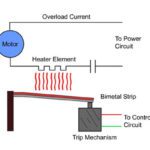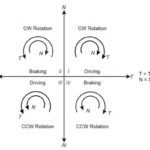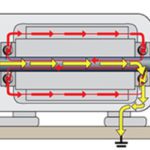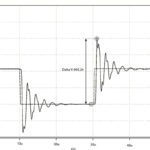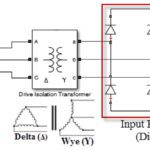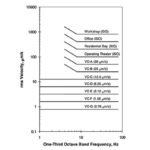Heat is a major factor in the performance and life of a motor, and one of the primary sources of motor heating is current running through the motor windings. Since heating is an unavoidable condition of motor operation, it’s important to protect the motor from overheating, or thermal overload. In a previous post, we described […]
What’s the difference between dynamic braking and regenerative braking?
When a motor’s rotor speed is greater than its synchronous, or designated, speed, it can act as a generator, creating electrical energy from mechanical energy. This electrical energy needs somewhere to go, and there are two ways to deal with it — dissipate it as heat, or reuse it. Dynamic braking takes the energy generated […]
What are busbars and how are they used in motion control applications?
Busbars are components that facilitate the distribution of power to electrical equipment, supplementing or replacing traditional wiring in applications such as commercial facilities, data centers, and industrial plants. At their most basic, busbars are relatively simple bars, strips, or rods made of copper, brass, or aluminum, but in many cases, they’re constructed in specific shapes […]
What are bearing currents and what causes them?
Pulse-width modulation is a fundamental operating principle of variable frequency drives (VFDs), but the high-frequency switching that delivers pulses of voltage from the drive to the motor can cause bearing currents — high-frequency currents that flow through the motor bearings, often leading to damage and premature failure. To achieve pulse-width modulation, insulated gate bipolar transistors (IGBTs) […]
What is cable ringing between AC drives and motors and how can it be avoided?
Variable frequency drives use a technique referred to as pulse-width modulation (PWM) to provide voltage of varying frequency to an AC induction motor. The inverter, or output, stage of the VFD uses insulated gate bipolar transistors (IGBTs) that switch on-and-off rapidly, creating trapezoidal pulses of varying width to simulate AC sinusoidal voltage. But the windings in […]
What’s the difference between resistance, reactance, and impedance?
DC circuits are relatively easy to analyze, due to current flowing in one direction, with resistance being the main element of the circuit. AC circuits, on the other hand, are more complex, since voltage and current alternate direction with a given frequency. Whereas DC circuits have resistance, AC circuits often have resistance and another property, known […]
What are drive isolation transformers and how do they differ from line reactors?
A variable frequency drive alters the speed of an AC induction motor by rectifying incoming AC power to DC, storing the DC power in a bus, and then converting the DC power back to AC at the voltage and frequency required to meet the load demands. Although this matching of the motor speed to the […]
Without micromotors global logistics would be lost
Always more, always faster, always farther — everything needs to arrive at the right time at the right place. The global goods cycle keeps the economy running and presents challenges for everyone involved. Its function relies on extensive automation within the logistics chain, which would be almost impossible without an armada of high-performance micromotors. These motors often […]
What are linear springs and how do they work?
Springs that follow Hooke’s Law are often referred to as “linear springs” because they have a linear relationship between load and deflection. A linear spring has the same diameter along its entire length, and this uniform diameter gives it a constant spring rate. In other words, the spring rate doesn’t change regardless of the load acting on […]
What are vibration criteria and VC curves?
Precision manufacturing and testing processes are highly sensitive to vibrations, which often result from both internal sources such as foot traffic, fans, and pumps, and external ambient sources such as outside traffic, construction, and other nearby industrial activities. To address these concerns, a set of “generic” vibration criteria was created in the 1980s by Eric Ungar […]

